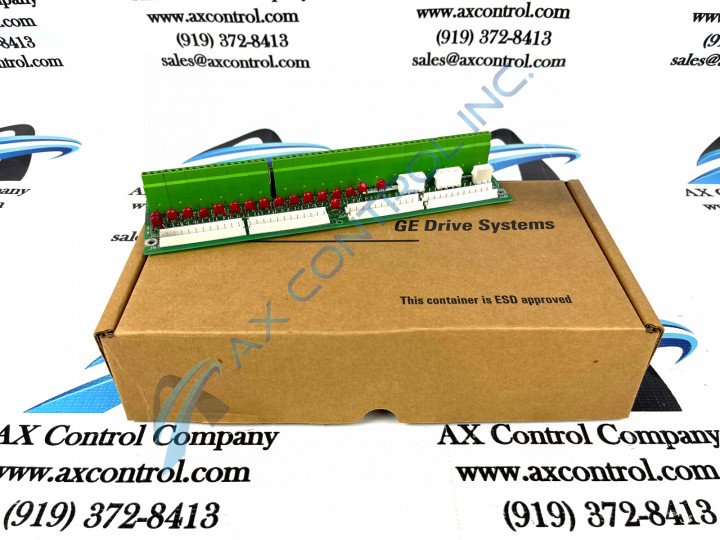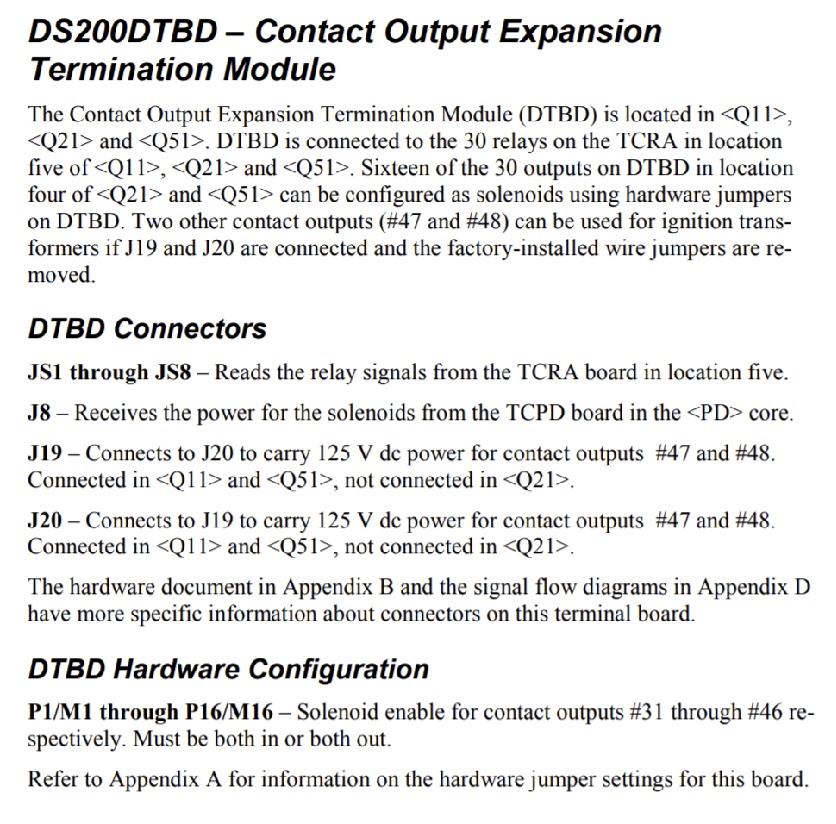About the DS200DTBDG1ABB
This DS200DTBDG1ABB printed circuit board was originally manufactured for placement in the Mark V Turbine Control System Series. As evidenced by its full name, the Mark V Series has specific applications in the control and management systems of wind, gas, and steam turbine automated drive assemblies. This DS200DTBDG1ABB printed circuit board or PCB for short's Mark V Series is additionally one of the final General Electric product series to make use of their patented Speedtronic control system technology; although it is considered a legacy series due to its eventual discontinuation by the original manufacturer in the years following its initial release. This DS200DTBDG1ABB PCB is truly better-definable by its official functional product description as a Contact Output Expansion Termination Module, which is somewhat surprising given this DS200DTBDG1ABB product's DS200DTBDG1ABB functional product number's absence of any special modular assembly-indicating series tag. The DS200DTBDG1ABB Contact Output Expansion Termination Module is not the original product of its functionality to make an appearance within the Mark V Series; that would be the DS200DTBDG1 parent Module missing this DS200DTBDG1ABB device's three-fold revision history.
Hardware Tips and Specifications
As with tha vast majority of Mark V Series products available in our new and reconditioned inventory; this DS200DTBDG1ABB product offering is accompanied by its own set of functionality-introducing hardware component inclusions, specifications, and installation procedures.The GE Terminal Board DS200DTBDG1ABB features 2 terminal blocks. Each block contains 107 terminals for signal wires. The GE Terminal Board DS200DTBDG1ABB also contains multiple test points, 2 jumpers, and 3 34-pin connectors. The board also contains 3 40-pin connectors. In addition to some of its more-specialized hardware component inclusions and specifications, this DS200DTBDG1ABB PCB is also populated by many standard Mark V Series voltage-limiting hardware components, such as rectifiers, diodes, and capacitors, and is additionally coated by a thick rudimentary protective layer of normal-style PCB coating. The board is 11.25 inches in length and 3 inches in height. It is designed to fit in a specific location in the drive interior and is secured in place with screws. The connectors available to the assembly of this DS200DTBDG1ABB product offering include:
- The JS1-JS8 TCRA Board Relay Signal Connectors
- The J8 TCPD Board Solenoid Power Connector
- The J19 and J20 Daisy-Chained Contact Outputs Power Connectors
All of these aforementioned connectors in the assembly of this DS200DTBDG1ABB product have been named through a combination of their factory-printed nomenclature labels, potential Mark V Series interfacing opportunities, and specific selection or application for the DS200DTBDG1ABB PCB and its greater Mark V Series automated drive assembly.
As mentioned before, this DS200DTBDG1ABB product is accompanied by an intensive and guided installation process. First use a screwdriver to remove the screws from the GE Terminal Board DS200DTBDG1ABB. After you have removed the signal wires, ribbon cables, and other cables the board can be removed easily. With one hand remove the screws and hold them with your other hand. If they drop into the drive, retrieve them before you continue. They might cause a high-voltage short between cables or components. It is possible for them also to become jammed in the powerful moving parts in the drive; this might cause damage to the motor or other components. Carefully remove the board and keep it from hitting against other boards or devices inside the drive. You might accidentally knock off components from other boards or scratch the surface of boards.If you label the signal wires and ribbon cables with the connector IDs of where they are to be connected, the installation of the board is easy. Due to the multiple cables connected to the board, route the cables so that they do not block the air vents. The air vents enable cool air to enter the drive and draw away heat from the components.














